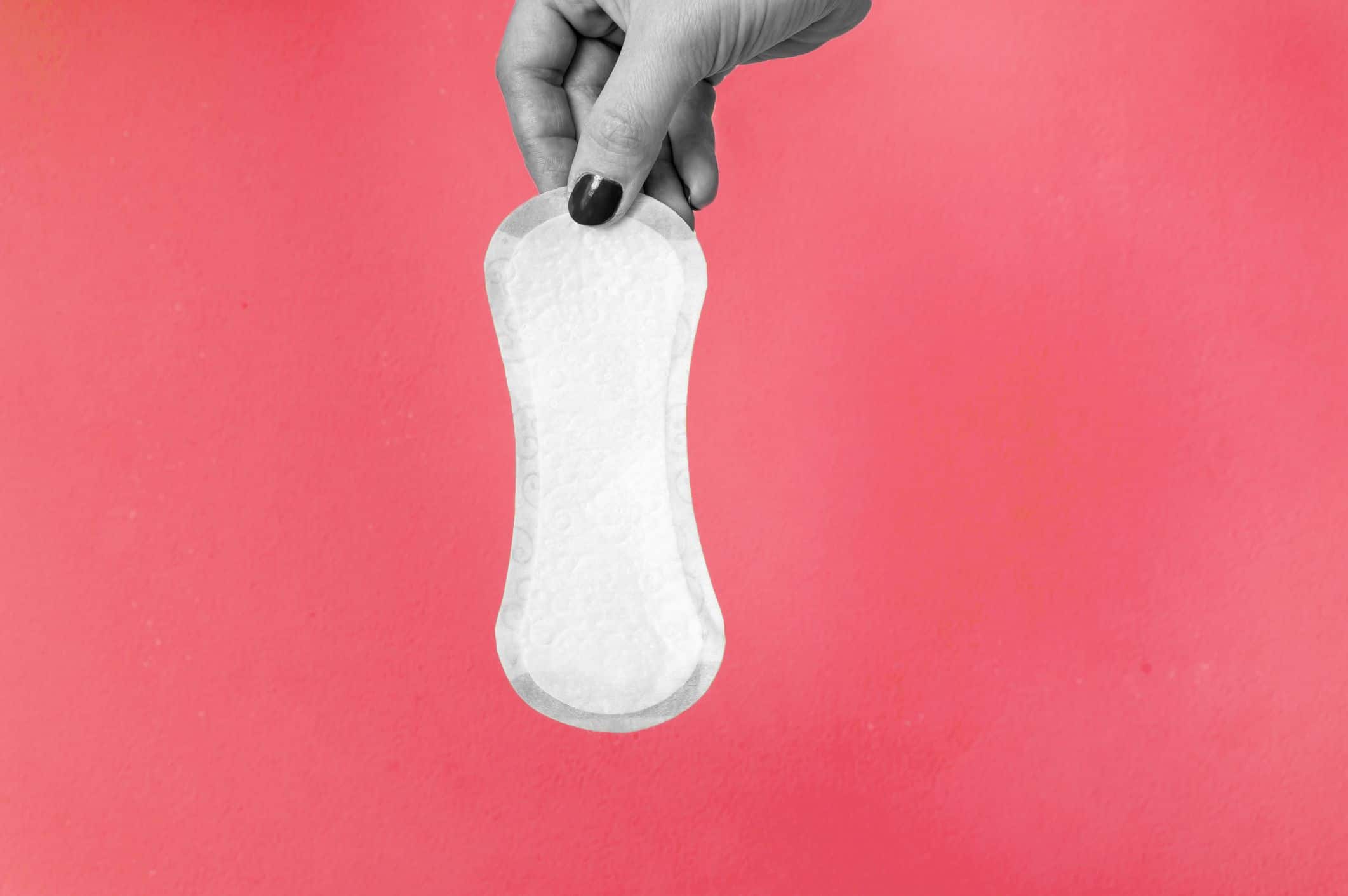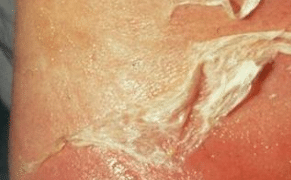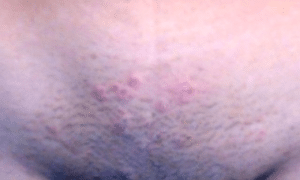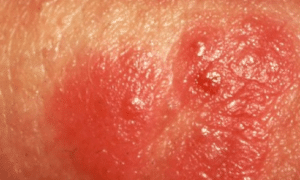Have you noticed thick white clumpy vaginal discharge? It is normal to have vaginal secretions throughout your menstrual cycle. However, the discharge is not supposed to be accompanied by other symptoms like burning sensation, itching or odor. In this post, we have insights into the causes of white clumpy discharge before and after periods, in pregnancy, STD, after sex, itchy, smelly, and odorless. We have also provided various diagnosis and treatment of the various causes. You will also learn from different pictures provided in the post.
White Clumpy Discharge
It is normal to have white vaginal secretion. The discharge is made up of cells, bacteria and fluids that have an important role of keeping the vagina lubricated, preventing the vagina from harmful bacteria, washing away dead skin cells and also creating a conducive environment for survival and swimming of the sperms to fertilize the egg.
Thick and white discharge is usually produced by vaginal cells or the cervix. A normal discharge is supposed to be white, milky, creamy, grey or clear in color. It may be thin, sticky, watery, thick, slippery or clumpy depending on the stage of your menstrual cycle. For instance, you are likely to have slippery discharge when nearing ovulation.
Normal vaginal secretion or discharge have mild or no smell and does not cause itching, irritation or a burning sensation inside or outside the vagina. The consistency and texture of the secretion vary from one woman to the other depending on the stage of their menstrual cycle.
An abnormal thick white and clumpy vaginal discharge are mainly caused by an infection or sexually transmitted diseases. It is characterized by the following:
- Yellow or green discharge
- Unpleasant smell or odor
- Itching or inflammation around the vagina
- A burning sensation when having a short call
- Pain during sexual intercourse
Some of the infections that result in unpleasant thick white discharge are not sexually transmitted diseases while others are. Some of these infections and diseases include the following:
- Bacterial vaginosis
- Vaginal yeast infection
- Chlamydia
- Trichomoniasis
- Gonorrhea
- Diabetes mellitus
- Pelvic inflammatory disease
- Toxic shock syndrome
- Cervical pathology
White Clumpy Discharge Causes
Do you have a vaginal discharge that is thick white clumpy and resembles a cottage cheese? This is due to a vaginal yeast infection. This is a fungus infection caused by candida albicans. There is always a small amount of yeast in the vagina. However, when it overgrows, it causes a yeast infection.
The Thick and white discharge caused by a yeast infection is usually odorless or have a mild odor. However, if the discharge has an unpleasant smell, then it may be due to a bacterial infection known as bacterial vaginosis.
Women are mostly affected by yeast infection than men simply because a vagina provides a conducive environment for breeding of yeast. Therefore, bacteria and yeast cells imbalance can cause an overgrowth of yeast and hence results in secretion of white and clumpy discharge. Vaginal yeast infection may occur due to the following:
- Taking Antibiotics
Taking antibiotics to control other bacterial diseases in your body can kill a lot of bacteria including the good ones that controls and regulates the growth of yeast. When the number of bacteria in the vagina decreases, they provide a good chance for excessive multiplication and growth of yeast cells that result to yeast infection.
- Unhygienic Conditions
Moist and damp places provide an ample condition for yeast cells to multiply. Therefore, wearing damp and dirty underwear can lead to yeast infection. You are supposed to wash your underwear daily and air them to dry completely before wearing.
- Wearing tight clothing
Wearing tight clothing like jeans, tights, and trouser prevents free air circulation in your private areas. This provides warm and moist conditions that support any types of fungi. Friction from tight clothing also accelerates the growth of fungus including in the groin area.
- Having a Dry Vagina
A dry vagina is susceptible to any infections. Engaging in a sexual intercourse with a dry vagina can tear the mucous membrane that covers the vaginal lining to cause inflammations. It is important to have sex when you are fully aroused or you can use vaginal lubricants.
- Using Vaginal Deodorants
When vaginal deodorants reach the mucous membrane inside the vagina, can cause irritations and lead to a yeast infection. An allergy to vaginal deodorants can make your vagina dry, itchy and inflamed. This can also lead to other infections that can lead to thick and white vaginal discharge.
- Unprotected Oral Sex
The mouth contains yeast cells and can be passed from mouth to genitals when having unprotected oral sex although vaginal yeast infection is not considered to be a sexually transmitted disease. Therefore it is possible to get this infection from your sexual partner.
Symptoms of thick white discharge caused by yeast infection
The discharge caused by a yeast infection is characterized by various symptoms that include the following:
- Irritation and a burning sensation when having sex or peeing
- Irritation, inflammation or itching of the vagina i.e. vaginal opening or vulva and labia
- Redness of the vulva
- Pain when having a sexual intercourse
- Swollen vulva
- White cottage cheese discharge
- Mild or no odor
Diagnosing thick white and clumpy discharge caused by yeast infection
If you exhibit the above symptoms, then be sure that you are suffering from vaginal yeast infection. It is therefore important to visit your doctor right away for diagnosis and treatment. It is not advisable to go for self-treatment since the above symptoms may be similar to those of other vaginal infections.
The doctor will diagnose your condition through self and microscopic examination or Vagina culture and swab. The doctor may obtain some sample from the discharge, mix it with saline solution and observe it through the microscope to identify the yeast cells. Recurring or severe yeast infection is tested through vagina culture and swab.
Treatment of thick white and clumpy discharge caused by yeast infection
Vaginal yeast infection treatment depends on its severity. It can be treated using tablets or vaginal creams or gel. Mild vaginal yeast infection can easily be treated using over the counter passaries and anti-fungal creams.
The passaries are inserted into the vagina for an overnight using its applicator. An antifungal cream is used together with passaries for effective results. Oral tablets are used to treat to treat severe vaginal yeast infection. It works by killing fungus in the body. Some of the tablets medicines include Nystan, Sporanox, Diflucan and Nizoral among others.
How to prevent thick, white and clumpy discharge caused by yeast infection
To prevent a vaginal yeast infection from happening or reoccurring, it is important to:
- Wearing cotton underwear
- Drying your private area thoroughly after taking bath or swimming
- Treat other body conditions like diabetes
- Do not douche
- Avoid wearing tight clothing like tights, jeans, and trousers
- Do not use vaginal deodorants
- Avoid prolonged use of antibiotics. Talk to the doctor about your condition if it is a must to take antibiotics.
- Use lubricants during sexual intercourse if you have a dry vagina.
White Clumpy Discharge no Smell
There is nothing to worry about if you are having a vaginal discharge with mild or no smell. A normal discharge is supposed to have no odor and does not cause itching, burning or pain when having sexual intercourse or peeing.
It is normal to have different types of vaginal discharge during the entire menstrual cycle. You may experience some discharge during ovulation, before and after periods and even when you are pregnant in accordance with the balance between the estrogen and progesterone hormone that help in regulating and controlling the menstrual cycle.
White Clumpy Discharge with Odor
Are you having white or yellow discharge with odor? Having a vaginal discharge with odor is enough reason to worry. A normal vaginal discharge is supposed to be odorless or with the mild smell and does not cause any itching or a burning sensation.
Yellow or white discharge with foul smell can be an indication of vaginal infection. You may also experience this problem when suffering from diabetes. Bacterial vaginosis is a mild vaginal infection that is caused by bacteria. It occurs when there is an imbalance of good and bad bacteria in your vagina. This infection is characterized by:
- White or gray vaginal discharge
- Watery or thin discharge
- Strong and unpleasant smell
- Burning sensation when peeing
- Itching around the vagina on the outer part.
A healthy vagina is supposed to have a balanced combination of bacteria and yeast cells. A fishy odor results from the imbalance of the yeast cells and bacteria. Bacterial vaginosis is not sexually transmitted disease although you are at a high risk of getting it when:
- Having several sex partners
- Having new sex partner
- Taking bath with antiseptic liquids
- Douching
- Smoking
- Using strong detergents to wash your underwear.
If you are having abnormal vaginal discharge, you should go and see a gynecologist. After diagnosis, the doctor will be able to rule out other causes and provided a preferred treatment.
White Clumpy Discharge and Itching
White discharge and itching is always a sign of a serious vaginal infection that requires treatment. Most of the vaginal infections and diseases are characterized by itching, irritation, inflammation, a burning sensation, unpleasant smell, redness, swelling and presence of yellow or green discharge.
Itching is mostly experienced on the vaginal opening, vaginal lips, and vulva, inside the vagina and even in the groin area. Intense itching may be present when having a sexual intercourse or urinating. The best advice is to visit your doctor for a diagnosis to determine the cause and come out with the best treatment.
White Clumpy Discharge before Period
Are you having white discharge prior to your periods? White discharge before periods could either be normal or early symptoms of pregnancy. If you had unprotected sexual intercourse with your partner during the ovulation period could cause a white clumpy discharge or a condition known as leukorrhea.
If not pregnant, white discharge could be pre-menstrual symptoms that are also characterized by acne, fatigue, swollen or tender breasts, stomach upsets, headache, backache, joint and muscle pain, food cravings or appetite changes and trouble sleeping. These symptoms are similar to those that you may experience when pregnant.
White Clumpy Discharge after Periods
Vaginal discharge is common and normal after the end of your periods. Reddish or brown discharge can be a leftover of your previous periods coming out. This should only be for few days after your periods.
However, you should not ignore a thick white, yellow or green discharge that is smelly, causes itching and a burning sensation, pain while peeing or during a sexual intercourse. It could be a serious vaginal infection that requires a medical attention.
White Discharge during Pregnancy
White vaginal discharge is among the first early pregnancy symptoms. This may occur before experiencing other symptoms like missed monthly periods, Nausea or having a positive pregnancy test. Most of the women normally experience a thick white discharge.
When pregnant, your body increases the amount of estrogen hormone that stimulates the production of this discharge. The thick white discharge plays a very important role in preventing harmful bacteria and other infections from getting up into the uterus.
An early pregnancy discharge is always white or creamy and odorless. It does not cause any discomfort like itchiness or a burning sensation in your private organ. When pregnant this discharge is always accompanied by swollen or tender breast, Nausea, Constipation, mood swings, fatigue, headache or a backache, food craving, and slight bleeding.
Not all vaginal discharge is safe to your health and that of the fetus. You should be able to examine the discharge carefully to determine whether it has other symptoms like a bad smell, causes itchy or a burning sensation and pain during sexual intercourse or when peeing.
If you notice the above symptoms, don’t hesitate to visit your health care provider or gynecologist for diagnosis and treatment. Do not self-diagnosis or use over-the-counter medications to treat vaginal infections when you are or trying to get pregnant as it can cause miscarriage or damage to the fetus.
White Clumpy Discharge with Blood
Non-menstrual bleeding or abnormal discharge that has blood spots should always be investigated no matter how the little spots may be. Although it is common for some women to spot after the start of using pills as a method of family planning.
The other possible causes that can result in white discharge with blood includes infections or inflammations inside the vagina or womb, pregnancy, and abnormalities in the womb like cervical erosion, polyps or even cancer.
It is important to visit your gynecologist to determine the exact cause of your problems. The doctor will ask you a series of questions and may wish to examine your abdominal area and the pelvis. He or she may also take a sample of the discharge for laboratory analysis, after the result the doctor will advise on the best treatment to take depending on the cause of your problem.
White Clumpy Discharge STD
Did you have unprotected sex several days ago? Sexually transmitted diseases such as chlamydia, gonorrhea, and trichomoniasis can cause thick white discharge. Discharge due to sexually transmitted diseases is always accompanied by other symptoms like vaginal itching and irritation, pain during sex and peeing. Symptoms can also appear on other parts of your body.
When suffering from gonorrhea infection, you may also have to spot between your periods. This means that you may also experience abnormal discharge with pink or brown discharge in company with other symptoms on the other parts of your body.
It is important to note that the above sexually transmitted are not only spread through sexual intercourse. They can also spread through close contact with items like towel and swimsuits that are contaminated.
Sexually transmitted diseases inflicted abnormal discharge can be treated using antibiotics. However, it is imported to visit your gynecologist for diagnosis to determine the exact infection for effective treatment.
Cottage Cheese like Discharge
Are you having thick white and clumpy discharge that resembles a cottage cheese? Then you may be suffering from a yeast infection. Yeast is a fungus that lives inside the vagina in small numbers. However, a yeast infection means that there are too many yeast cells that are growing inside your vagina.
Yeast infection is commonly caused by a candida albicans that is a type of yeast. A healthy vagina is supposed to have many bacteria with a small number of yeast cells. Under normal circumstances, bacteria known as Lactobacillus acidophilus helps to control and regulate the growth of yeast cells.
When the balance is interrupted, the yeast cells can overgrow. The imbalance can result from taking antibiotics, weak immune system, stress, poor eating habits, high estrogen levels caused by pregnancy or hormone therapy and certain medical conditions like diabetes and HIV. The symptoms of vaginal yeast infection include:
- Swelling around vagina
- Pain during sex or when peeing
- Soreness, vaginal itching
- Redness
- Rash
Vaginal yeast infection is not sexually transmitted infection although sexual contact can spread it. This infection can also affect women who are not sexually active. This infection is likely to recur after treatment if not proper measures are put in place.
It is not recommended to perform self-diagnosis for yeast infection especially when you are pregnant. See your doctor especially when you don’t know what you are suffering from. The doctor may perform a vaginal examination to rule out other possible causes.
If you are not pregnant, you can treat this infection using over-the-counter medicines without a prescription. You can use antifungal creams, tablets or suppository that are inserted into the vagina. Don’t take yeast infection medicines without doctor’s advice when you are pregnant.
Discharge after Sex
It is normal to secrete white discharge after sex. As we said earlier, vaginal discharge plays an important role of cleaning, lubricating and providing an ample condition for the sperms to survive and swim to meet the egg. Therefore, more discharge is produced after sex to do the above roles.
Although most of the women expect the vaginal lubricants to be clear or watery, it can also be milky, white or creamy. Variation in color and texture depends on the time of menstrual cycle you are in and hormonal fluctuations. As long as the discharge does not cause irritation and does not have an odor, there is nothing to worry about.
If you experience thick and a little dry discharge, it may be an indication that you are nearing the end of your menstrual cycle. This happens because the cervix produces secrets to help the sperm travel easier and faster to fertilize the egg during ovulation.
Thick white discharge after sex may also not be yours. If you had unprotected sex with your partner, the discharge may be the remnants of his ejaculation in combination with your vaginal lubricants. The other pre-cum and pre-ejaculatory fluids may be present even if your partner withdrew himself before ejaculating.
Treatment
Thick white and clumpy discharge treatment depends on the cause. Some of the common infections are treated using antifungal or antibacterial medicines.
Vaginal Yeast Infection Treatment
The abnormal vaginal discharge caused by a yeast infection is treated with anti-fungal medications. Treatment for severe or complicated yeast infection includes 2 to 3 doses of fluconazole, 14-day cream, tablets, ointment or suppository treatment and a long-term prescription of fluconazole or topical antifungal medication.
Their medications come in form of creams, gel, ointment, and tablets. Many patients prefers using tablets than creams or gels. Creams and gels may not work effectively since some of it may slip out of the vagina when doing your daily activities and can be quite messy.
Medications like clotrimazole and miconazole creams are also available in tablets. Many patience prefers the tablets as they can easily be inserted into the vagina to dissolve slowly by slowly. Fever doses of tablets also give a greater relief as compared to creams.
You can get this medicines over the counter in a drug store without doctor’s prescription. However, it is recommended to consult your doctor if you are pregnant or if you are not sure whether it is a yeast infection. To avoid a re-infection:
- Eat a well-balanced diet
- Wash your underwear with hot water
- Use underwear made from natural fibers such as cotton
- Eat yogurt
- Take supplements containing lactobacillus
- Avoid douching
- Do not use feminine deodorants
- Avoid sitting in hot tubs or taking frequent hot tubs.
Bacterial Vaginosis Treatment
Bacterial vaginosis usually clears on its own without treatment but you should seek treatment when having symptoms to avoid further complications. This infection can easily be treated using antibiotic medication. Its treatment is effective up to 90 percent of the cases.
According to MedicalNewsToday.com, women undergoing hysterectomy or abortion should be treated bacterial vaginosis before the procedure to prevent complications. This infection is treated using Metronidazole that is a common antibiotic available in:
- Gel form to be applied to the vagina for 5 days
- Tablet form that is taken orally twice daily for one week. These tablets are more effective than gel and are mostly recommended for pregnant or breastfeeding mothers.
- Tablet form that is taken once. This treatment is not effective as compared to tablets that are taken for 7 days.
When taking metronidazole, it is recommended to avoid taking alcohol as it can cause a reaction. When taking this medication avoid consuming alcohol for at least for the period taking the medicine.
Bacterial vaginosis can also be treated using Clindamycin. It is an alternative in the case when metronidazole is not effective. You should be able to get relief after completing the dose. You can also test again to ensure that the infection has completely healed.
Pictures
How does a thick white and clumpy discharge look like? This discharge resembles a white tissue paper or like cottage cheese. It can be accompanied by other symptoms like itching, burning sensation or a fishy smell depending on the cause. You will learn more from the various pictures that are provided in this post.
Sources and references:
- Thick white discharge: https://www.checkpregnancy.com/thick-white-discharge-3-types-what-they-mean/
- 6 things your, ahem, discharge is trying to tell you: http://www.netdoctor.co.uk/healthy-living/wellbeing/advice/a26260/things-your-discharge-is-trying-to-tell-you/
- Thick white clumpy discharge: https://conceivesuccess.com/clumpy-white-discharge/
- Thick white discharge: https://conceivesuccess.com/thick-white-discharge/
- Vaginal discharge: http://www.pamf.org/teen/health/femalehealth/discharge.html
- Important things you should know about thick white discharge: https://www.babyzeen.com/thick-white-discharge/
- Thick white discharge causes and what to do: https://www.followmum.com/thick-white-discharge-causes-and-what-to-do/
- Bacterial vaginosis: https://www.medicalnewstoday.com/articles/184622.php
- Bloody discharge from my vagina: http://www.netdoctor.co.uk/ask-the-expert/sexual-health/a11521/bloody-discharge-from-my-vagina/
- Bleeding, itching or burning, vaginal discharge and vaginal odor: https://symptomchecker.webmd.com/multiple-symptoms?symptoms=bleeding%7Citching-or-burning%7Cvaginal-discharge%7Cvaginal-odor&symptomids=244%7C129%7C50%7C410&locations=35%7C35%7C35%7C35













